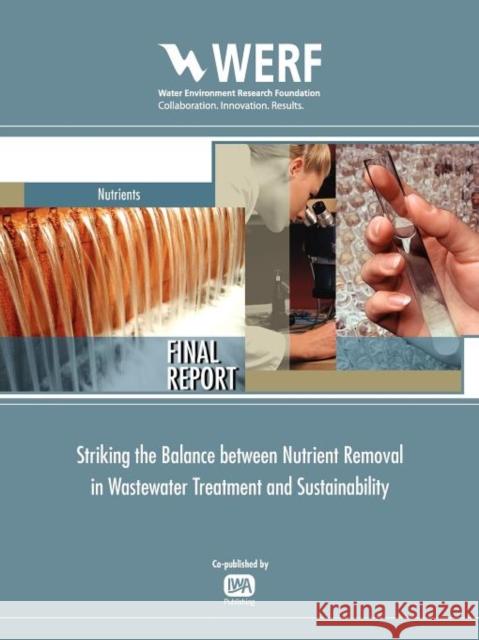Striking the Balance between Nutrient Removal in Wastewater Treatment and Sustainability » książka
Striking the Balance between Nutrient Removal in Wastewater Treatment and Sustainability
ISBN-13: 9781780400433 / Angielski / Miękka / 2011 / 105 str.
This study focuses on sustainability impacts as wastewater treatment plants implement treatment technologies to meet increasingly stringent nutrient limits. The objective is to determine if a point of "diminishing returns" is reached where the sustainability impacts of increased levels of nutrient removal outweigh the benefits of better water quality.
Five different hypothetical treatment trains at a nominal 10 mgd flow were developed to meet treatment targets that ranged from cBOD mode (Level 1) to four different nutrient removal targets. The nutrient removal targets ranged from 8 mg N/L; 1 mg P/L (Level 2) to the most stringent at
The GHG emissions results suggest that a point of diminishing return is reached at Level 4 (3 mg N/L; 0.1 mg P/L). The GHG emissions show a steady increase from Levels 1 to 4, followed by a 65% increase when moving from Level 4 to 5. Despite a 70% increase in GHGs, the discharged nutrient load only decreases by 1% by going from Level 4 to 5. The primary contributors to GHG emissions are energy related (aeration, pumping, mixing). The GHG emissions associated with chemical use increases for the more stringent nutrient targets that required chemical treatment in addition to biological nutrient removal. In terms of cost, the total project capital cost increases approximately one-third from $9.3 million to $12.7 million for changing from Level 1 to 2, followed by a more than doubling in cost when changing from Level 1 to 5. Total project capital costs in this report are for a Greenfield plant. The operational cost increase between levels is more pronounced than total project capital cost with more than five-times increase from Level 1 to 5 ($250/MG treated to $1,370/MG treated, respectively).
This report focused on in-plant (point source) options for nutrient removal and the implications for cost and sustainability. Other approaches, such as addressing non-point sources, could be added to the assessment. Rather than focusing strictly on point source dischargers and requiring Level 4 or 5 treatments, Level 3 or 4 treatments complimented with best management practices of non-point sources might be a more sustainable approach at achieving comparable water quality.











